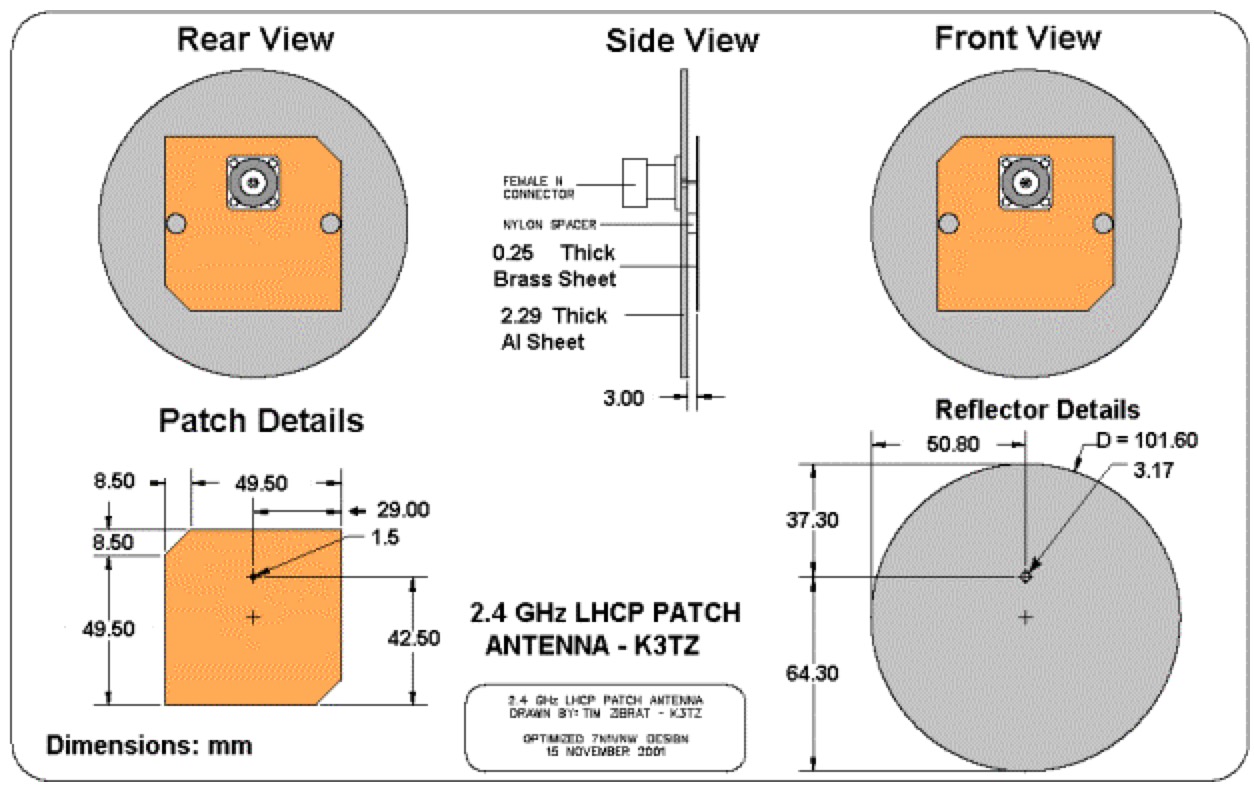
#PATCH ANTENNA ARRAY CALCULATOR PATCH#
The feed point for each antenna is offset from the center of the patch by 0.75 mm in the horizontal direction as this was found to be the location of the best return loss result. A view of the patch layout on the dielectric sheet is visible in Figure 1. Each patch is 3.4025 mm square and is spaced a half-wavelength at 28 GHz (approximately 5.36 mm) apart. The region does not let you create the faces you need to combine with PML faces.The antenna geometry consists of a 52.5 x 52.5 mm sheet of dielectric material (dielectric constant = 2.2, loss tangent 0.0009, thickness 0.254 mm) that is backed by a conducting ground plane and topped with 64 patch elements in an 8x8 configuration. * Please note for this method, an auto-size “region” cannot be used, instead draw a box for air/vacuum box. Then assign P/S boundary to each pair of walls (Figure 10).Select the two faces that are on the same plane from the faces created from airbox and PML and unite them to create a side wall (Figure 10).Select each side of the PML and create objects from those faces (Figure 10).Select each side of the airbox and create an object from that face (Figure 10).Choose the top face and add PML boundary.(For example, in our model airbox height was 19mm+substrte thickness, the PML height was 3mm, so we reduced the airbox height to 16mm). Reduce the size of the airbox * slightly, so after adding the PML layer, the unit cell height is the same as the one that was generated using the Modes Calculation.However, the P/S boundary need to surround the PML layerĪs well, which means a few additional steps are required. This is a good compromise and provides very similar results toįloquet port models. Another alternative to Floquet port is to cover the cell by a ItĬan be a good alternative to Floquet port only if the beam scanning is limited Is much simpler than Floquet port, it is not accurate for large scan angles.

9 Radiation boundary on top of the unit cell It is recommended not to select them for the antenna arrays.įig. The 3D Refinement tab is used to control the inclusion of the modes in the 3D refinement of the mesh. The model with high attenuation can be removed from the Floquet port After the correct size for the airbox is calcualted and entered, The product of the attenuatin and height of the airbox should be at If the unit cell is too short, then you will see many modes are not attenuatedĮnough. TheĪttenation multiplied by the height of the unit cell (in the project units,ĭefined in Modeler->Units) should be large enough to make sure the modes areĪttenuated enough so removing them from the calcuatlion does not cause errors. Is your guide in selecting the height of the unit cell and vaccume box. After selecting those, a table of modes and theirĪttenuation using dB/length units are created. The Mode Table Calculator will request your input ofįrequency and Scan Angles. Of the Floquet Port window, choose a high number of modes (e.g. Included are defined with the help of Modes Calculator. 7 Floquet port on top of the cell is defined based on UV direction of P/S pairs In 2020R1 does not require the user to define the UV directions, theyįig.

Note that scan angles can be assigned as parameters. To assign a lattice pair boundary select the two sides that are supposed toĬreate infinite periodic cells, right-click->Assignīoundary->Coupled->Lattice Pair, choose a name and enter the scan angles.

It automatically assigns the primary and secondary boundaries. There are two methods toĬreate P/S: (1) Lattice Pair, (2) Primary/Secondary boundary. InĪEDT 2020R1 this boundary is under “Coupled” boundary. The next step is to define P/S to generate the lattice. Size in a bit, for now let’s just assign a value or parameter to it, as it willīe determined later. In creating a vacuum region around the antenna. The vacuum box is larger than usual size of quarter wavelength that is usually used


 0 kommentar(er)
0 kommentar(er)
